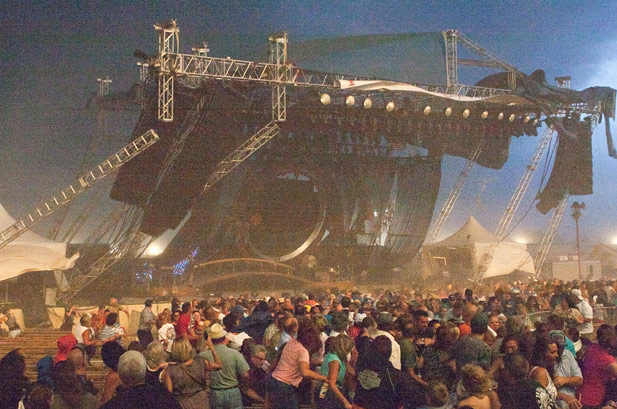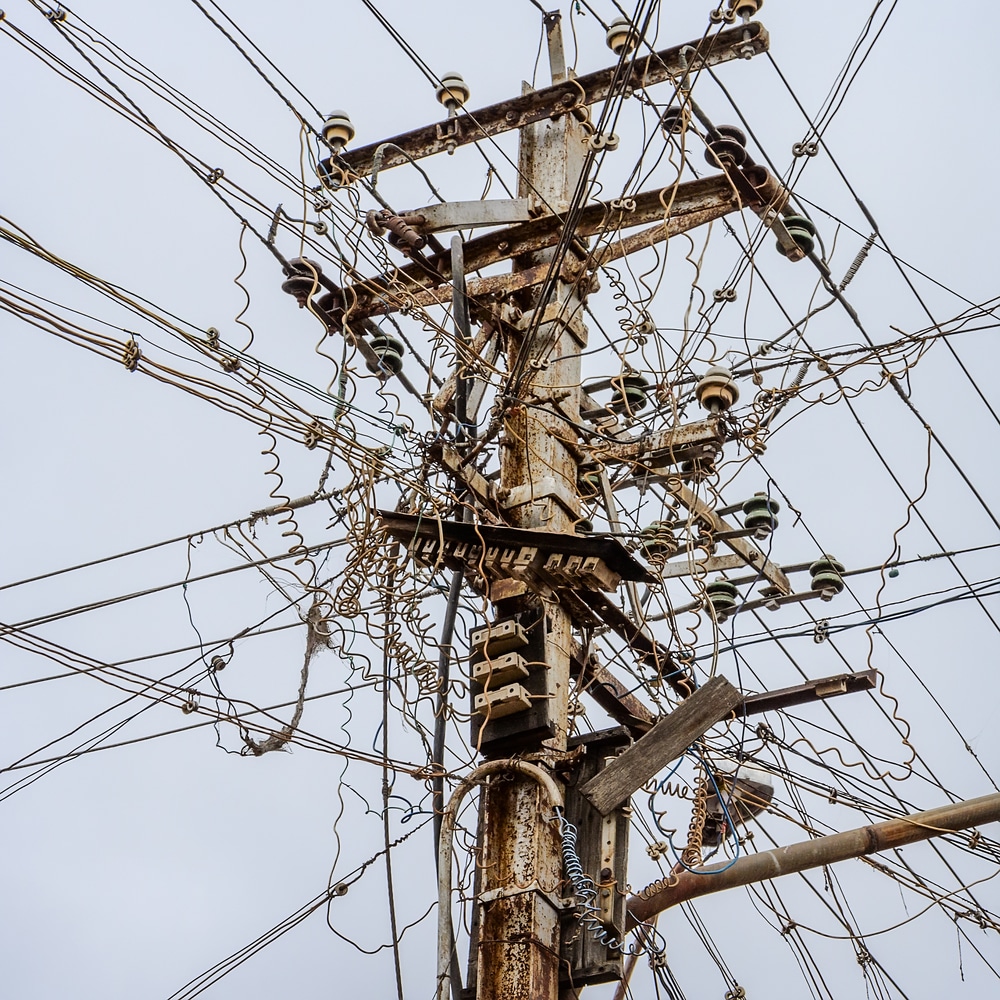
Another day, another reminder of how careful we all have to be when we’re out there defying the laws of reality:
It’s no secret in our business that there are people out doing shows RIGHT NOW that should not be doing work, and companies that are one disaster from screwing up our peace and serenity with their incompetence. There are also a lot of people out there who have never had their hands on a piece of equipment but feel qualified to give the rest of us advice on how to do things.
The opposite of the two aforementioned groups are folks like the ones at Sound Prospects in Switzerland; Sound Prospects recently wrote a great piece on workplace safety, and I needed to cross-post that article so people hear the safety chant from people OTHER than myself, Erich Friend at Teqniqal Systems (and the awesome Theatre Safety Blog), Richard Cadena from PLASA and the Academy of Production Technology, among other people chanting the Gregorian chant of survival in our business.
Please check out the article at Sound Prospects, written by Alex Schoenknecht. I recommend also checking out some of Alex’s other articles! — a few highlights from the Workplace Safety article:
Most Common Rigging Mistakes
1.) Unrated Hardware
It is essential that the Safe Working Load (SWL) of all components in a system is known and that the Safe Working Load for the weakest component is not exceeded. Hardware that does not have the SWL clearly forged into it is a “wild card”. Most industrial applications work on a SWL of 5:1. A component that will fail under a load of 5000 lbs. that is given a safety factor of 5:1 has an SWL of 1000 lbs. In the entertainment industry an SWL of 8:1 is the accepted standard.
2.) Incomplete Installation
Even though a component may have a sufficient SWL rating, it becomes a liability if it is not installed correctly. Installations should be neat and clean with hardware properly terminated. An installation that is neat and orderly allows for easier inspections and ensures that the forces on components, such as pulleys, are within the equipment’s design limits.
3.) Damaged Equipment
A piece of damaged equipment becomes the weak link and a liability to the system as a whole. Damaged components must be replaced immediately with ones that are of equal or greater rating. Replacing a broken part, even temporarily, with a substandard piece is putting the integrity of the system at risk.
4.) Wear and Tear
Even the best of systems wear out. This is why it is essential for maintenance to be an ongoing process. Most Countries require yearly inspections of all hoisting equipment. The owner must keep a maintenance and repair log. Since we are often lifting over head the operator must be aware of any changes in how the system is running and investigate the cause immediately to ensure that safe operation is not compromised.
5.) Improper Use
Using equipment for purposes that it was not designed for, or modifying equipment for other purposes, can easily result in overloading and failure. Many components also have strict guidelines as to how and where they should be used by the manufacturer. For example Spectrum 3 proof coil chain is suitable for suspending stationary loads, but if the load will be moving a Spectrum 8 chain is required. It is important to ensure that the components are appropriate for the application.
Thanks for the great article, Alex!






You will find that Alex’s article on safety in fact was copied directly from another blog at http://www.ontariostaging.com/rigging_overview.htm
He did not even acknowledge the original post.
Comments are closed.